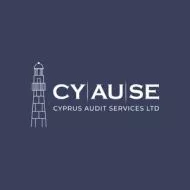- in United States
- with readers working within the Media & Information and Securities & Investment industries
- within Wealth Management, International Law and Immigration topic(s)
- with Finance and Tax Executives
CHANGES TO CAPITAL ADEQUACY REPORTS
INVESTMENT FIRMS REGULATION (IFR) & INVESTMENT FIRMS DIRECTIVE (IFD)
Applies for Q2 2021 and Q3 2021 onwards
BRIEFING
The existing CRR and CRD does not take into consideration the fact that the Investment Firms have different business models and business risks to Credit Institutions.
For instance, unlike Banks Investment Firms do not take large deposits or large portfolios of retail and corporate loans. Hence, there is no trading risk other than counterparty risk in almost all cases. In addition, not all investment firms have the same size and impact to the regional or global economy. As a result, the Commission has introduced the IFR and IFD to ensure that such differences are reflected in the EU's Investment Firms prudential framework.
The preparation of the new Capital Adequacy Disclosures is not heavily dependent on the balance sheets of the investment firms but rather a better suited combination of income statement and balance sheet risks captured by the so-called k- factors. Consequently, the risk weighted assets used (RWAs) by the CRR will stop been used. More data from the investment firms are needed to complete the new capital adequacy reports hence the setup, contribution, support and assistance of the investment firm is a prerequisite to be able to gather the needed information.
NEW CAPITAL REQUIREMENTS
Class 2 Investment Firms
Class 2 Investment Firms must have at all times own funds which amount at least to the highest of the following:
- Fixed Overhead Requirement (25% of previous years overheads)
- Permanent minimum capital requirement
- Their K- Factor requirement
Class 3 Investment Firms
Class 3 Investment Firms must have at all times own funds which amount at least to the highest of the following:
- Fixed Overhead Requirement (25% of previous years overheads)
- Permanent minimum capital requirement
Their K- Factor requirement(as K factors do not apply on category 3)
K FACTORS
The below K factors aim to capture the risks the investment firm poses to itself, its liquidity and its clients;
- Risk to Client: How can the investment firm harm its clients
- Risk to Market: How big the investment firms' exposure is based on its positions
- Risk to Firm: Captures counterparty risk and trading operational risks
PREPARATION OF CAPITAL ADEQUACY REPORTS
In a nutshell, we summarise what you have to pay attention to and what is needed from the Investment Firms in order to be able to prepare and submit its new Capital Adequacy Reports (COREP). We list below information and the steps an investment firm needs to follow to be able to complete its Capital Adequacy Report for the period Q2 2021 which is a test period and thereon for periods Q3 2021 onwards.
Step 1 - Categorisation of the investment firm
All investment firms are now classified into 3 sizes; "Class 1", "Class 2", "Class 3".
The distinction of the size depends on the investment firms' activities, size, interconnectedness, and off course systemic importance.
Class 1 - are the big systematic investment firms and will be treated as credit institutions as they exceed specific criteria as per IRD.
Class 2 - are the investment firms who will be applying the new IFR and IFD on a quarterly basis and which exceed the categorisation of "small and non interconnected investment firms".
Class 3 - are the smaller investment firms who will be applying the shorter IFR and IFD on an annual basis called "small and non interconnected investment firms".
So the first step is to determine where our investment firm falls and this will be determined by assessing the requirements of article 12 of the IFR.
Non-Systemic Investment Firms
Determine if your Investment Firm is a class 2 or class 3 investment firm by applying article 12 of the IFR.
Small and non-interconnected investment firms as per article 12 of the IFR:
We provide below extract from Article 12 of the IFR which stipulates the conditions for an investment firm to fall under Category 3. If any one of the below do not apply then the investment firm will be categorised as a Class 2 investment firm.
Extract
"1. Investment firms shall be deemed to be small and non-interconnected investment firms for the purposes of this Regulation where they meet all the following conditions of Article 12 of the IFR:
- AUM measured in accordance with Article 17 is less than EUR 1,2 billion;
- COH (daily client orders handled) client measured in accordance with Article 20 is less than either:
- EUR 100 million/day for cash trades; or
- EUR 1 billion/day for derivatives.
(c) ASA (assets safeguarded and administered) measured in accordance with Article 19 is zero;
(d) CMH (client money held) measured in accordance with Article 18 is zero;
(e) DTF (daily trading flow) measured in accordance with Article 33 is zero;
(f) NPR or CMG measured in accordance with Articles 22 and 23 is zero;
(g) TCD (trading counterparty default) measured in accordance with Article 26 is zero;
(h) the on- and off-balance-sheet total of the investment firm is less than EUR 100 million;
(i) the total annual gross revenue from investment services and activities of the investment firm is less than EUR 30 million, calculated as an average on the basis of the annual figures from the two-year period immediately preceding the given financial year.
If the above apply, then your investment firm falls into class 3. If not, then it falls into class 2.
Step 2 – Gathering of data
To be in a position to complete the new COREP forms more detailed data will need to be extracted from back office and trading departments in addition to the information required to prepare the previous capital adequacy reports, forms 061,082 & 083 (such as Period Trial Balances, Period Balance Sheet, Last Available Audited Financial Statements).
Thew new additional information needed:
- Total monthly assets under management
- Total daily client money held – Segregated and non segregated
- Assets safeguarded and administered
- Total daily client orders handled - Cash value
- Total daily client orders handled - Derivatives
- Clearing Margin given - CMG additional detail
- Daily trading flow - cash trades
- Daily trading flow - derivative trades
- Five, if available counterparties or group of connected counterparties where the largest amount of client money are held
- Five, if available counterparties or group of connected counterparties where the largest amount of securities are held
- Five, if available counterparties or group of connected counterparties where the largest amount of firms own cash are deposited held
- Five, if available counterparties or group of connected counterparties where the largest amount of firms' earnings is derived
- Five, if available, largest trading books exposures
- Five, if available, largest non-trading books exposures calculated including assets not recorded in the book
CYAUSE AUDIT SERVICES
CYAUSE Audit Services Ltd is performing Statutory compliance services to Cyprus Investment Firms and Funds on a continuious basis in its capacity as external adviser, compliance function and or external or internal audit function.
Whether an investment firm regulated by the Cyprus Securities and Exchange Commissions (CySEC) or a Fund we can perform compliance services and ad hoc engagements tailored to your needs.
CYAUSE Audit Services is an Audit & Assurance firm with offices in Nicosia and Limassol. During 2015 we have been awarded by I.C.P.A.C and the A.C.C.A (local and international association of Chartered Certified Accountants) for the Quality of our Audit Services and our Office's Procedures.
Being a Truly International Audit & Assurance firm, we have associates from all over the world and we are constantly looking for new associates to expand our network further. At present, CYAUSE Audit Services operates internationally as Accace Circle, a co-created business community of like-minded BPO providers and advisors who deliver outstanding services with elevated customer experience. Our network covers almost 40 jurisdictions with over 2,000 professionals, it supports more than 10,000 customers, mostly mid-size and international Fortune 500 companies from various sectors, and process at least 170,000 payslips globally.
CYAUSE Audit Services Ltd is also member of the 3E Accounting Network, an international accounting network which originates from Hong Kong and has more than 80 members from all over the world.
About Us
CYAUSE Audit Services has extensive experience in the insurance industry has helped tens of insurance brokers and agents register and get licensed by the local Cyprus regulator granting them passporting access to the rest of the European Union.
CYAUSE Audit Services is an Audit & Assurance firm with offices in Cyprus and the UAE. During 2015 we have been awarded by I.C.P.A.C and the A.C.C.A (local and international association of Chartered Certified Accountants) for the Quality of our Audit Services and our Office's Procedures.
Being a Truly International Audit & Assurance firm, we have associates from all over the world and we are constantly looking for new associates to expand our network further. At present, CYAUSE Audit Services operates internationally through its membership with BKR International amongst the largest American associations in the world, Accace Circle, a co-created business community of like-minded BPO providers and advisors who deliver outstanding services with elevated customer experience. Our network covers almost 40 jurisdictions with over 2,000 professionals, it supports more than 10,000 customers, mostly mid-size and international Fortune 500 companies from various sectors, and processes at least 170,000 payslips globally.
CYAUSE Audit Services Ltd is also a member of BKR International one of the biggest US Accounting Associations of the word and the 3E Accounting Network, an international accounting network which originates from Hong Kong and has more than 80 members from all over the world.
Learn More about Cyprus Corporate Environment
Information about CYAUSE Audit Services and the Cyprus Corporate & Tax System can be obtained from our Website or our YouTube channel which provides valuable information about the Corporate & Tax Environment of Cyprus.
The content of this article is intended to provide a general guide to the subject matter. Specialist advice should be sought about your specific circumstances.


